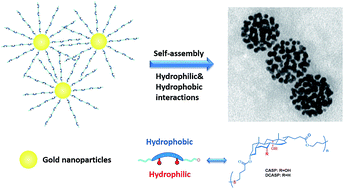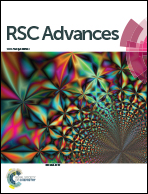Main chain poly(bile acid) directed plasmonic nanospheres with amphiphilic binding pockets and photo-triggered destruction†
Abstract
Amphiphilic block copolymer-directed self-assembly of gold nanoparticles (GNPs) with fine-tunable optical and plasmonic properties has attracted considerable attention. In this paper, we developed a series of sulfide-bridged main chain poly(bile acid)s and investigated biologically sourced amphiphilic homopolymer-directed plasmonic nanospheres and their properties. With the functional sulfide groups, the amphiphilic homopolymers were conveniently grafted to the surface of GNPs by noncovalent Au–S bonds. Directed by the biologically amphiphilic poly(bile acid)s, the modified GNPs assembled into nanospheres with a tunable size. With the organized arrangement of GNPs, the assemblies exhibited excellent optical–thermal conversion phenomena, which can disrupt the ensembles of GNPs and provide an alternative efficient strategy for the controlled release of encapsulated functional molecules. Inherited from the unique facial amphiphilicity and concave skeleton of the bile acids, the assemblies possessed both hydrophilic and hydrophobic cavities, which can encapsulate both hydrophilic and hydrophobic molecules simultaneously. These amphiphilic biologically sourced main chain polymers may provide a new avenue for the directed assembly of GNPs and functional materials.


 Please wait while we load your content...
Please wait while we load your content...